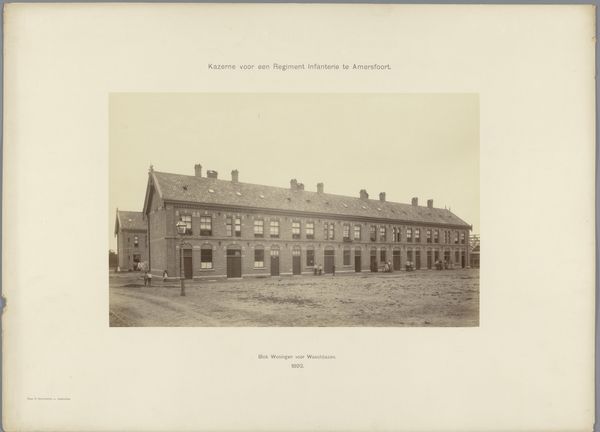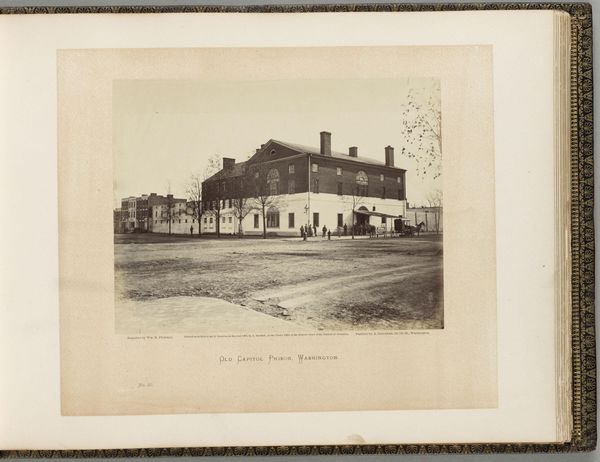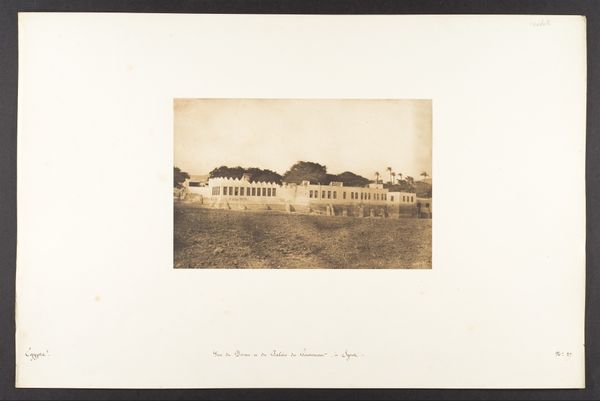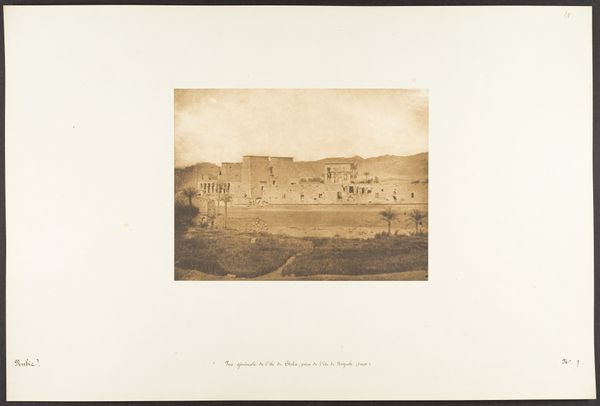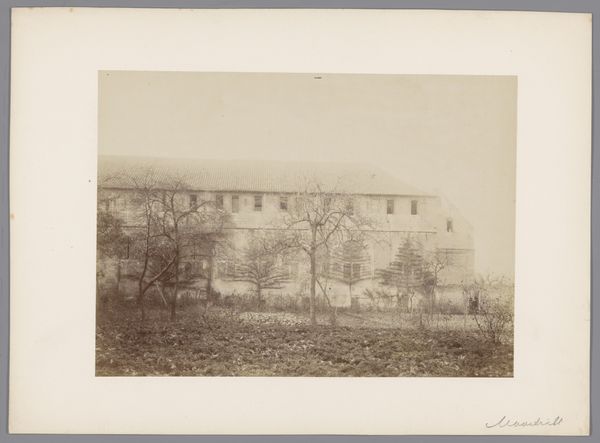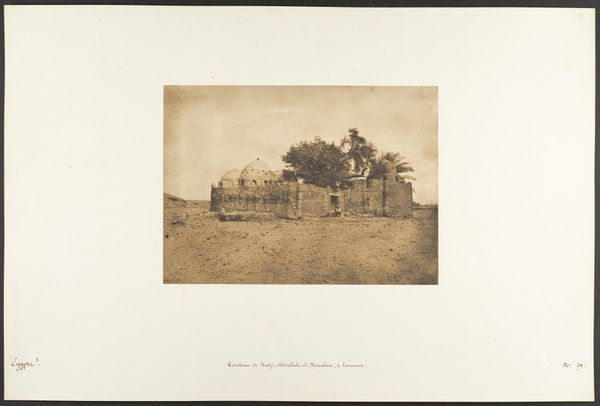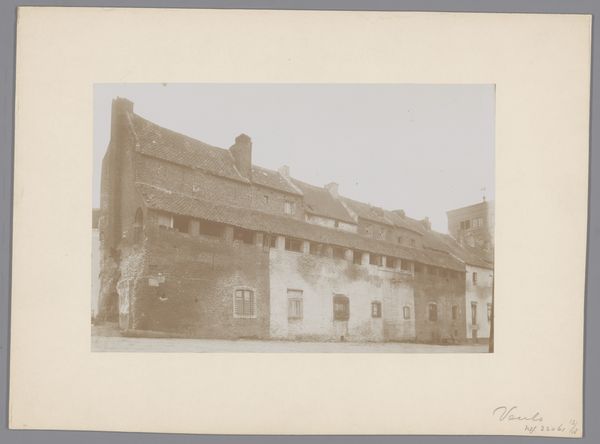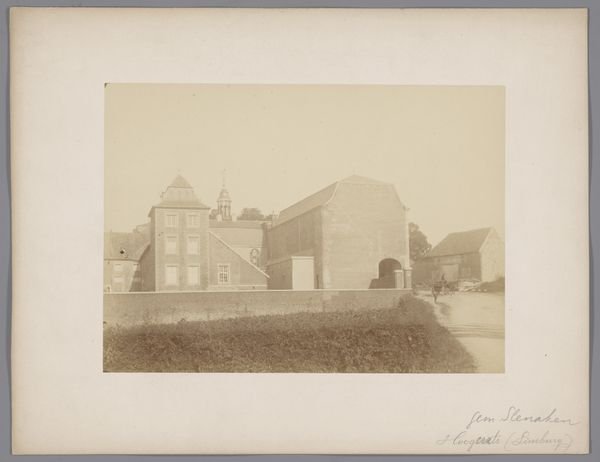
print, photography, architecture
# print
#
landscape
#
photography
#
architecture
#
realism
Dimensions: height 48.5 cm, width 66 cm
Copyright: Rijks Museum: Open Domain
Curator: Ah, here we have a rather austere piece: P. Oosterhuis's 1892 photograph, "Kazerne voor een Regiment Infanterie te Amersfoort" — or, "Barracks for an Infantry Regiment in Amersfoort." It’s a black and white print. Bleak, isn't it? Editor: It absolutely is! It gives me a feeling of immense discipline, cold uniformity… even the stark tonal range of the photography feels regimented. Curator: The photograph serves, primarily, as a study of architecture, very much in line with the Realist movement, and there's a palpable, almost overwhelming lack of embellishment. What about its stark appearance truly captures your attention in terms of materials and manufacture? Editor: Well, I immediately focus on the construction itself. We see a long, low building, presumably brick—and look at the endless repetition of windows and chimneys. The industrialization of military housing; so many beds were likely constructed from cheap materials, perhaps using new mechanized methods to rapidly meet production targets. It really illustrates the commodification of the soldier's very existence, doesn't it? It almost feels like a social critique. Curator: Indeed! The photograph captures this critique in a subtle yet effective manner. In 1892, photography itself was undergoing massive industrial development and contributing to art documentation. What impact do you think these photographic tools might have had on social attitudes, on national identity? Editor: Huge impact! Wider availability meant that realistic depictions could challenge the glorification that painted or sketched renditions often promoted. These unvarnished images arguably exposed the reality of institutional existence for scrutiny in the public. Curator: Very interesting thought! It all goes into a potent reminder that the aesthetic isn't always simply an aesthetic. Even such a seemingly utilitarian architectural documentation has much deeper cultural undercurrents at play. I believe this has greatly increased my perception of the deeper meanings imbedded in it, don’t you think? Editor: Absolutely, seeing beyond the barracks really transforms one's perception of how things were actually made.
Comments
No comments
Be the first to comment and join the conversation on the ultimate creative platform.
